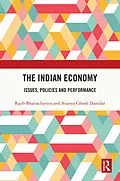This book provides a detailed structured analysis of the transition that has taken place in the Indian economy since independence to the present times (including the period of COVID-19 pandemic). Analysing objectives, achievements and failure of planning, the book discusses the crisis in the late 1980s, followed by economic reforms - structural changes and stabilization policies implemented along with regional variation on the development pattern across states.
The book also examines policies of distribution, poverty, inequality, and unemployment, reform measures in major sectors, namely, banking or financial sector in general, tax or fiscal policy, external or trade and exchange rate policy. This volume will be useful for students, researchers and faculty working in the field of economics, development studies, political science and public administration. The book will also be an invaluable companion to policymakers looking for a thorough and compact view of the transition in the Indian economic situation and the resulting policy changes which took place since India's independence.
Autorentext
Rajib Bhattacharyya is an Associate Professor in the Department of Economics, Goenka College of Commerce and Business Administration, Kolkata, India, with more than 20 years of teaching experience. His fields of interests are International Trade, Finance and Development Economics. He has contributed and edited several articles in national and international journals/books, namely, IGI Global, Emerald, Routledge and Springer.
Ananya Ghosh Dastidar is Professor and Head, Department of Finance and Business Economics and Dean, FASSH, University of Delhi. An alumnus of St. Xavier's College, Kolkata and CESP, JNU, she has over 20 years of teaching experience, supervised several MPhil and PhD theses, and her research interests lie in the area of International Economics and the Economics of Development.
